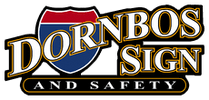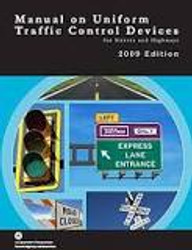The Manual on Uniform Traffic Control Devices: 2017 Review of Updates
2nd Jan 2018
The Manual on Uniform Traffic Control Devices (MUTCD), first published in 1935, standardizes how traffic control devices should be installed and maintained. These regulations apply to all public streets, highways, bikeways and private roadways open to the public. The MUTCD is managed by the Federal Highway Administration (FHWA) and has been since 1971. The document defines how markings, signage and traffic signals are to be used.
As technology evolves, the MUTCD is updated as needed. The MUTCD had several updates in 2017. Here’s what you need to know.
Termination of Interim Approval 11
As of December 21, 2017, the FHWA terminated Interim Approval 11. This standard permitted optional use of rectangular rapid flashing beacons. Interim Approval 11 was initially issued in 2003 but was never published in the MUTCD. Thus, after 14 years, the FHWA has issued its removal, rendering it no longer in effect. Going forward, installing or replacing rectangular rapid flashing beacons is prohibited. However, those current beacons installed prior to December 21, 2017, may be left in place until they are no longer useful.
Uncontrolled Marked Crosswalks
The FHWA submitted a new information brief on treatments used for uncontrolled marked crosswalks. This brief is intended to provide insights on how to enhance pedestrian safety and prevent pedestrian injuries and fatalities. Pedestrian safety is an ongoing issue for the FHWA. There was an 11 percent increase in pedestrian deaths in 2016, according to a report by the Governors Highway Safety Association.
There are many treatment options available that comply with the MUTCD. These treatments include:
- Enhancing pedestrian crossing warning signs with light-emitting diodes, activated by pedestrians
- Lighting usage on roadways to indicate a pedestrian crossing
Warning treatments can be combined or used individually. When determining what is the most appropriate treatment, transportation teams should consider the specific conditions of that site. FHWA recommends conducting a Road Safety Audit to identify the best approach to pedestrian crossing safety.
Check out these additional resources provided by the FHWA:
- Pedestrian & Bicycle Safety
- PEDSAFE (Pedestrian Safety Guide and Countermeasure Selection System)
- Safe Transportation for Every Pedestrian (STEP), an Every Day Counts initiative
Interim Approval 20 – Two-Stage Bicycle Turn Boxes
The FHWA published Interim Approval 20 on July 13, 2017. This standard allows for the two-stage bicycle turn boxes to be established. However, requests must be made to the FHWA before installation.
On-street bike lanes have long been designed as lanes to the right side of a general travel lane. Because of this placement, left turns can be tricky. The use of bicycle lanes continues to grow, now seen on multi-lane roads. With the expansion of urban rail systems, bicyclists may need to cross tracks at a sharp angle. The FHWA needed to develop a solution to these challenges that would offer cyclists a better option to merge or cross. A two-stage bicycle turn box helps riders stay within on-street lanes or use crosswalks at intersections. The turn box creates an area for cyclists to queue to turn at a signal intersection. The establishment of these turn boxes has many benefits, including reducing conflicts between bikes and pedestrians as well as facilitating safer turns.
Clarification on Innovative Traffic Control Devices
The FHWA published a memo on January 5, 2017, clarifying the usage of several traffic control devices like bike lane extensions, edge line markings and crosswalk markings. Additionally, the memo evaluates different tools under consideration for interim approval.
Pavement Marking Retroreflectivity Notice Published
Published in the Federal Register on January 4, 2017, the Supplemental Notice of Proposed Amendment for Pavement Marking Retroreflectivity. This notice defines recommended standards, guides and methodology for pavement marketing retroreflectivity. Retroflectivity refers to the phenomenon that occurs when reflected rays of light are returned in directions near the opposite of the direction from which they originated.
To learn more about these updates and all MUTCD regulations, you can find information here.




